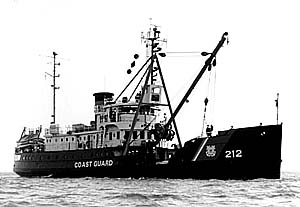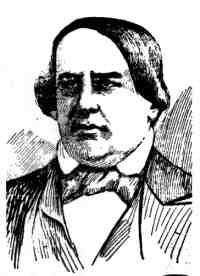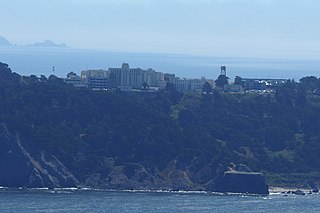
South San Francisco is a city in San Mateo County, California, United States, located on the San Francisco Peninsula in the San Francisco Bay Area. The city is colloquially known as "South City". The population was 66,105 at the 2020 census.
Leadership High School is a public charter high school located in San Francisco. Founded in 1997, Leadership or "LHS" was California's first start-up charter high school. The school provides a college-preparatory curriculum and focuses on leadership development and social justice.


Crestmoor High School opened in San Bruno, California in September 1962 to relieve congestion at Capuchino High School and Mills High School. It was the seventh high school to be built by the San Mateo Union High School District, based in San Mateo, California. Construction began in 1960 on a graded plateau in the Crestmoor district of San Bruno and took about two years to complete. The buildings, which are similar in design to those of Aragon High School, Hillsdale High School, and Mills High School, were constructed mostly of steel and glass, featuring expansion systems to provide earthquake resistance. The school, and its similarly designed schools, have been designed in an architectural style described as "postwar techno-optimism". The school was closed in 1980.
Rancho San Mateo was a 6,439-acre (26.06 km2) Mexican land grant on the San Francisco Peninsula, in present day San Mateo County, California.
Rancho Buri Buri was a 14,639-acre (59.24 km2) Mexican land grant in present-day San Mateo County, California, given in 1835 by Governor José Castro to José Antonio Sánchez. The name derives from the Urebure village of the Ramaytush speaking Yelamu tribe of Ohlone people who were settled by the banks of San Bruno Creek. Rancho Buri Buri extended between the north line of South San Francisco and the middle of Burlingame, and from the San Francisco Bay to the top of the Peninsula ridge and included present-day Lomita Park, Millbrae, South San Francisco, San Bruno, and the northern part of Burlingame.

The French American International School is a PK-12 independent school in San Francisco, California. The lower school (PK-8) is known as "French American" or simply "FAIS," FAIS is a bilingual French-English school from PK to 8th grade. The high school, International High School, referred to as "IHS" or "International", has its own identity and French is not required to attend. IHS is currently the only school in San Francisco to offer both the International Baccalaureate Diploma Program and the French Bac. Over half of the incoming freshman class at IHS come from Bay Area middle schools outside of FAIS, including, Chinese American International School (CAIS), Ecole Bilingue de Berkeley, International School of the Peninsula (ISTP), Live Oak, San Francisco Day, Presidio Hill, Hamlin, SF Friends, Adda Clevenger, Brandeis, Children's Day, Katherine Delmar Burke, Marin Country Day, St. Paul Episcopal, Alice Fong Yu, Aptos, and Everett, among others. A small number of students enter from schools abroad.
Rancho San Pedro was a 8,926-acre (36.12 km2) Mexican land grant in present-day San Mateo County, California given in 1839 by Governor Juan Alvarado to Francisco Sanchez. The grant encompasses present-day Pacifica.
Rancho Rincon de San Francisquito was a 8,418-acre (34.07 km2) Mexican land grant in present-day Santa Clara County, California given in 1841 by Governor Juan Alvarado to José Peña. The name means "corner or bend of the San Francisquito" referring to San Francisquito Creek. The grant extended along Matadero Creek to the hills and included the southern part of present-day Palo Alto and the southern part of the Stanford University campus.
Rancho San Francisquito was a 1,471-acre (5.95 km2) Mexican land grant in present-day Santa Clara County, California given in 1839 by Governor Juan Alvarado to Antonio Buelna. The grant was located on the southwest side of San Francisquito Creek and encompasses present-day western Menlo Park and the northern part of the Stanford University campus.
Rancho San Leandro was a 6,830-acre (27.6 km2) Mexican land grant in present-day Alameda County, California given in 1842 by Governor Juan Alvarado to José Joaquín Estudillo. The grant extended along the east San Francisco Bay from San Leandro Creek south to San Lorenzo Creek, and encompassed present-day San Leandro.

Rancho San Miguel was a 4,443-acre (17.98 km2) Mexican land grant in present-day San Francisco County, California. The land grant was given in 1845 by Governor Pío Pico to José de Jesús Noé. It included what is now known as Eureka Valley, and extended past Mount Davidson almost to present-day Daly City; it encompassed the present-day San Francisco neighborhoods of Noe Valley, the Castro, Glen Park, Diamond Heights and St. Francis Wood.

Rancho el Corte de Madera was a 13,316-acre (53.89 km2) Mexican land grant in present day Santa Clara County, California given in 1844 by Governor Manuel Micheltorena to Máximo Martínez. The name translates as "the place where lumber is cut". The roughly triangular shaped grant was west of today's I-280, and bounded on the north by Alambique Creek and San Francisquito Creek, on the south by Los Trancos Creek and Matadero Creek, and on the west by what is now Skyline Boulevard. The grant surrounded Rancho Cañada del Corte de Madera which extended along the Portola Valley. The land grant included parts of present day Woodside, Ladera and Stanford University.
Rancho Cañada de Verde y Arroyo de la Purísima was a 8,906-acre (36.04 km2) Mexican land grant in present-day San Mateo County, California given in 1838 by Governor Juan B. Alvarado to José María Alviso. The name roughly translates to ranch of the green glen and brook of the Purest. The grant extended along the Pacific coast from Purisima Creek south to Tunitas Creek and encompasses present-day Lobitos and the ghost town Purissima.
Rancho Agua Puerca y las Trancas was a 4,421-acre (17.89 km2) Mexican land grant in present-day Santa Cruz County, California given in 1843 by Governor Manuel Micheltorena to Ramón Rodríguez and Francisco Alviso. "Agua Puerca" is a combination of "water" and "pork, or pig", and probably refers to the stagnant water in the lagoon formed at the outlet of the stream at Davenport Landing, the original southern boundary. "Las Trancas" means "the bars" and may refer to the sand bars which naturally form at many California coastal creek outlets, forming stagnant lagoons just behind the beach.
Rancho San Vicente was a 10,803-acre (43.72 km2) Mexican land grant in present day Santa Cruz County, California given in 1846 by Governor Pío Pico to Blas A. Escamilla. The grant extended along the Pacific coast from Molino Creek and Rancho Agua Puerca y las Trancas south past Davenport Landing to San Vicente Creek and Rancho Arroyo de la Laguna. The grant stretched from the coast back into the Santa Cruz Mountains between the two neighboring ranchos. The former Rancho San Vicente lands contain most of today's community of Davenport.
Rancho San Antonio was a 7,982-acre (32.30 km2) Mexican land grant in present-day Santa Clara County, California given in 1839 by Governor Juan Alvarado to Juan Prado Mesa. The grant was bounded by Adobe Creek to the north and Stevens Creek to the south, and included Permanente Creek, and present-day Los Altos Hills.

The San Francisco VA Medical Center, also called the San Francisco Veterans Affairs Medical Center or the SFVAMC, is a Veterans Affairs medical center, located in San Francisco. The main facility is on 42nd Avenue and Clement Street at the former Fort Miley Military Reservation in the Richmond District. Fort Miley is located south of the Golden Gate and west of the San Francisco Presidio, on Point Lobos surrounded by the Golden Gate National Recreation Area.








